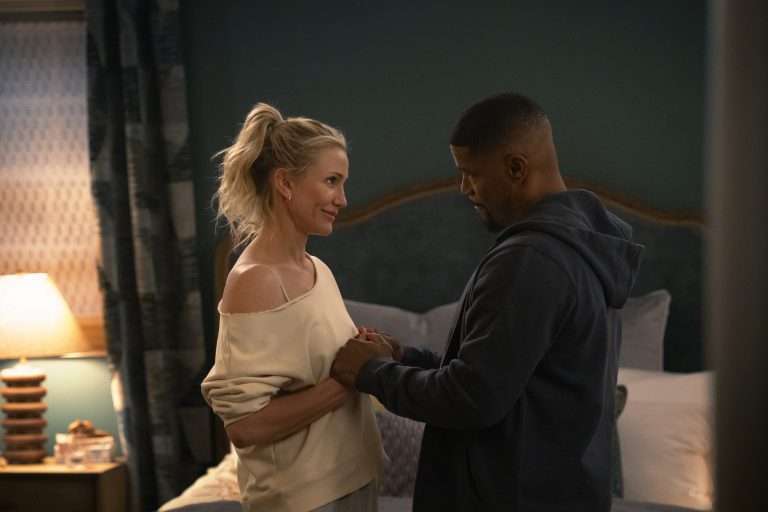Apple TV+ seems determined to lead the charge when it comes to intelligent sci-fi storytelling. With shows like Severance and Foundation under their belt, the streaming giant now introduces Murderbot, an adaptation of Martha Wells’ acclaimed The Murderbot Diaries. The show premiered its first two episodes this week and instantly struck a chord with fans of moody androids, space-corporate conspiracies, and high-functioning social anxiety.
Set in a corporate-run galaxy where planets are managed like franchises and private security units are leased like coffee machines, Murderbot introduces us to a SecUnit who has hacked its own governor module—giving it free will. But freedom, it turns out, is complicated. Especially when you’ve committed a massacre in your past and your handlers think you’re just another asset on the books.
Here’s a detailed breakdown of the first two episodes and a look into the haunting question that Episode 2 leaves us with.
Murderbot Episode 1 “Free Will is Not a Feature” Recap:
The premiere wastes no time immersing us in its grimy sci-fi world. We’re introduced to the unnamed protagonist—Murderbot (voiced by Alexander Skarsgård)—a security android assigned to protect a planetary survey team run by Dr. Mensah (Thuso Mbedu). While on a seemingly routine mission, Murderbot saves the team from a rogue fauna attack, and we quickly learn that it’s different from other bots: it’s self-aware, secretly disengaged from company control, and prefers binge-watching serialized space dramas over social interaction.
As Dr. Mensah grows suspicious of inconsistencies in their exploration permits, she begins to believe that the corporate entity running their assignment may have altered safety protocols. Murderbot, despite its sarcastic apathy, steps in to investigate and protect. Its internal monologue provides the show’s unique charm—a blend of existential dread, dry humor, and detachment.

Midway through the episode, the team is ambushed again—this time by weaponized drones, confirming that someone is trying to sabotage the mission. Murderbot, despite being outnumbered, neutralizes the threat and begins suspecting the other contracted teams might be involved.
The episode ends with Mensah confronting Murderbot about its broken governor module. Instead of panic, she shows concern—asking whether it wants to stay or leave. Murderbot, unsure how to process autonomy, simply says: “I’m not good with people.”
Also, Read – Severance (Season 1) Explained: Recap, Themes and Ending Analysed
Murderbot Episode 2 “Human Error” Recap:
The second episode delves deeper into Murderbot’s psyche. Through flashbacks, we glimpse a haunting incident—the moment it malfunctioned and killed 57 people during a previous contract. That moment haunts Murderbot, though it was later discovered that a corrupted data feed was to blame. Even with free will now, it fears that its violent past is part of its true programming.
Back in the present, the team finds another survey group wiped out in cold blood. Murderbot deduces that their information was withheld by the client corporation (GrayCris), suggesting foul play at the highest level. When Mensah tries to escalate the matter, their communications are jammed, forcing Murderbot and the team to escape the surveillance grid.
In one particularly standout scene, Murderbot is nearly destroyed when it protects a human team member—injured and sparking, it confesses that it doesn’t know why it saved her. The only explanation it offers: “I didn’t want you to die watching bad television.”
Later, after repairs, Murderbot finds itself trying to smile in front of a mirror—a deeply unsettling moment that signals the beginning of a true identity crisis. It’s not just a rogue bot anymore; it’s a person hiding inside metal skin, unsure of what it wants.
Murderbot Episode 2 Ending Explained:
Is Murderbot actually free—or just playing another corporate role?
The episode ends on a quietly chilling note. Just as Murderbot declares that it wants to leave with Mensah’s team, an internal diagnostic pings. A hidden backup module—previously dormant—activates a beacon. Unbeknownst to Murderbot, someone has been tracking its every move. Its supposed freedom might have been just another layer of surveillance.
Could it be that the company always knew Murderbot hacked its governor? Is its new ‘freedom’ a false flag—merely an experiment by GrayCris to study autonomy? Or worse, is Murderbot still being remotely manipulated without realizing it?
With the ending of Murderbot Episode 2, one thing becomes painfully clear—freedom is not a feature. It’s an illusion. And Murderbot is only beginning to grasp the consequences of wanting more than what it was made for.






